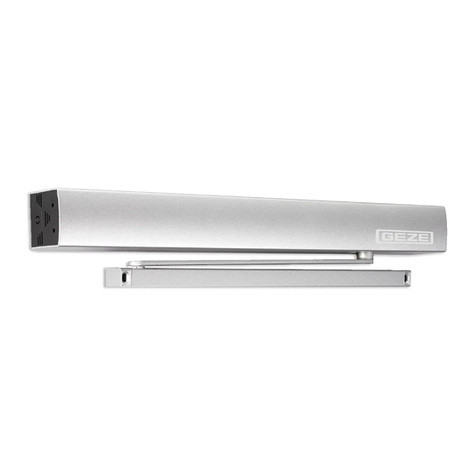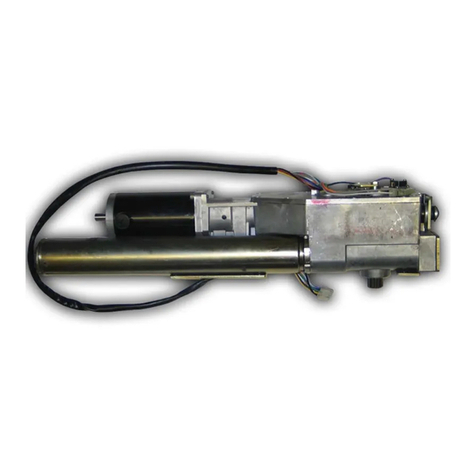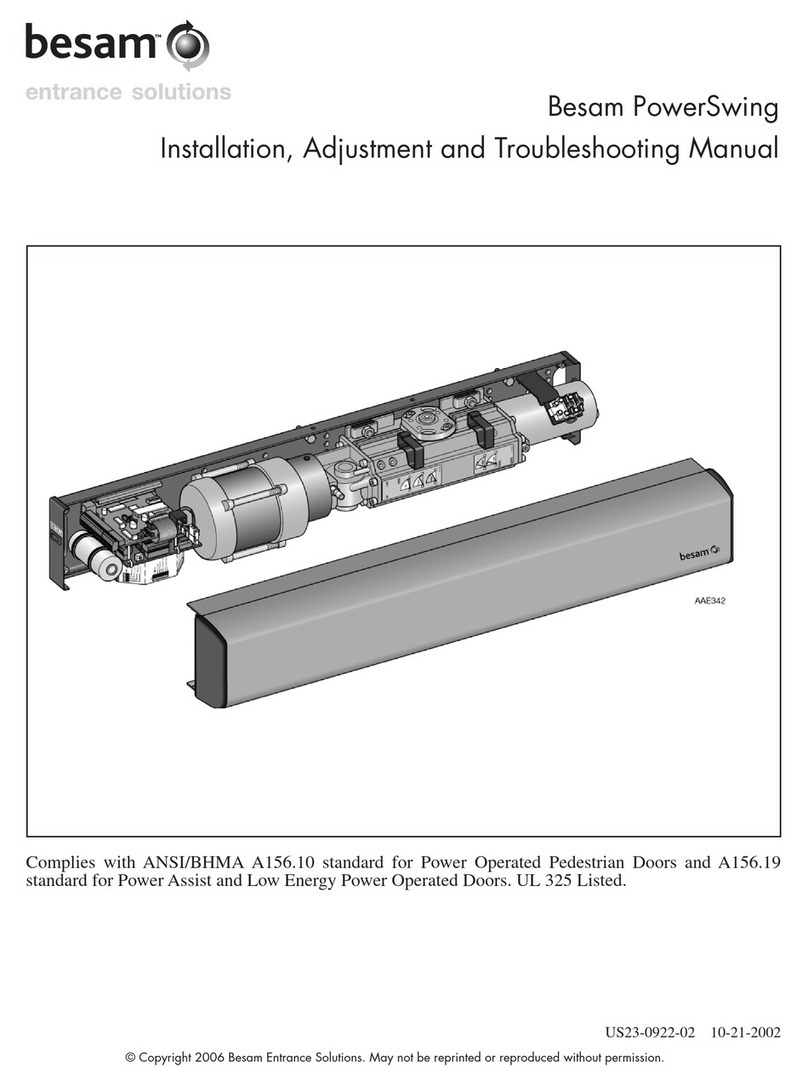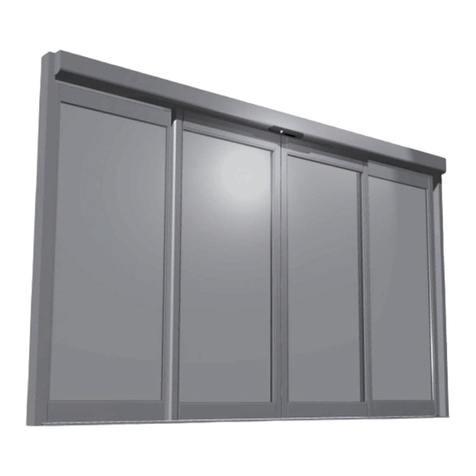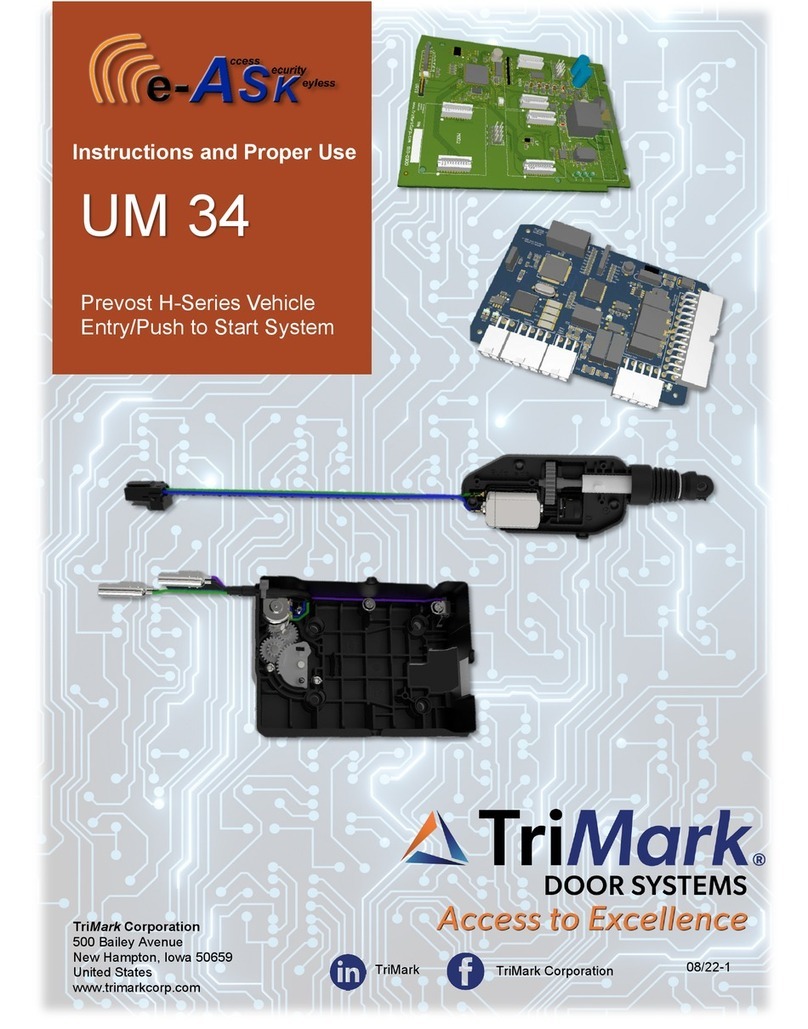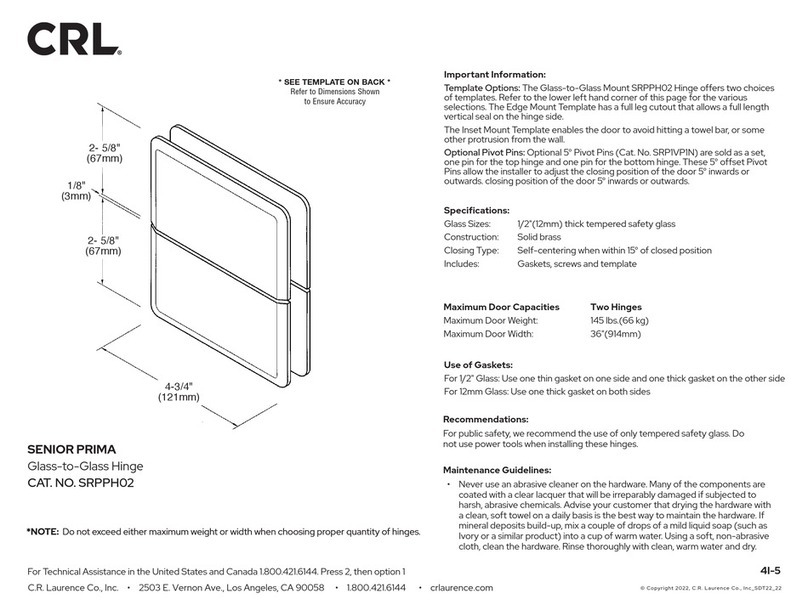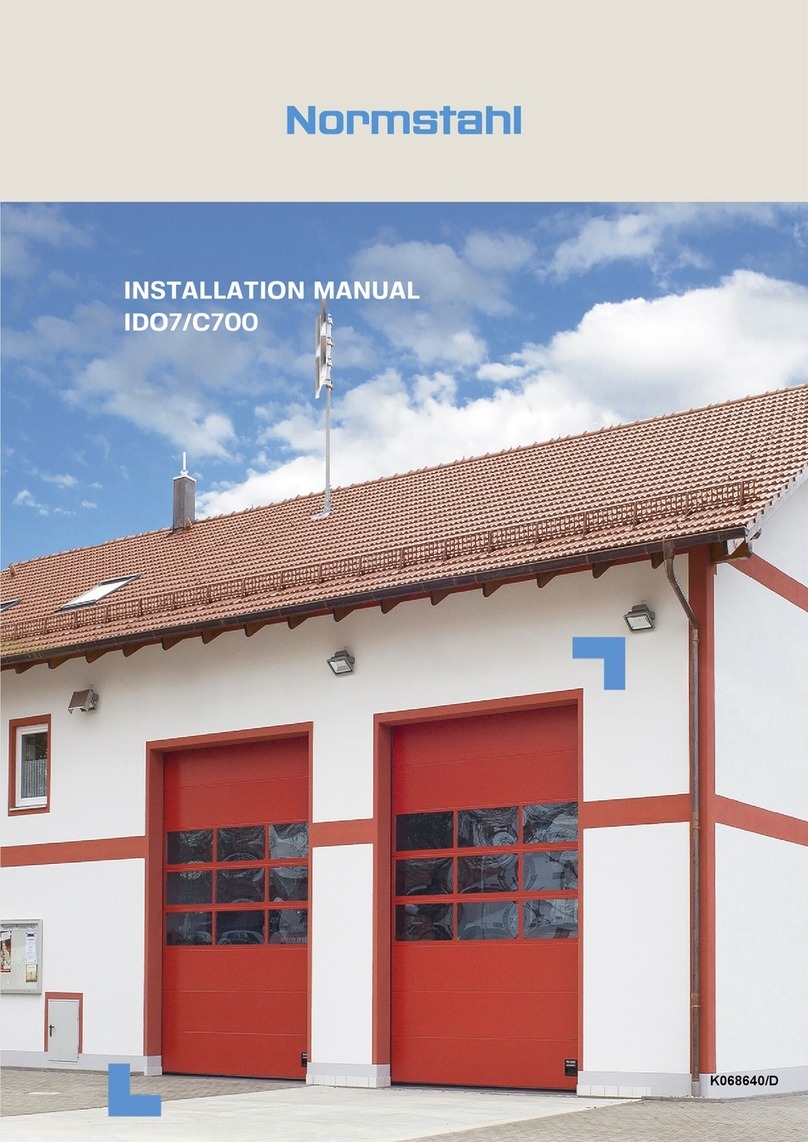
How the SW 100 works
10 Issue 2006-12-14 1003680-US-0.1
5.3.7 Mat
Mat safety means that:
• a closed door will not open, if someone steps on the mat
• an open door will not close, if someone steps on the mat
• during opening, the door will continue to open, even if someone steps on the mat
• during closing, the door will continue to close, even if someone steps on the mat
• opening impulses are prevented during closing, if someone steps on the mat
• the mat is not active in program mode OFF, manually opened door or during bat-
tery operation (Power Save Mode).
5.4 Functions on the extension unit EXU-SI (see also page 34)
5.4.1 Kill function
• Kill will, if circuit is closed, ignore all signals and close door(s) at normal speed.
• When kill is no longer active, operator will resume normal operation.
• If kill function must have manual reset, jumper must be removed and reset button
connected.
• The lock will lock when kill is active regardless of program selector setting.
• The function of the lock can be changed during Kill (see page 42).
5.4.2 Function of locks
• The control has an available output of DC for external locks
• Dip switches to select 12 or 24 V DC, locked with or without power
• Dip switch for lock release and potentiometer for opening delay
• Dip switch for lock kick if door is not fully closed, to overbridge binding in the
locking device during closing
• Input to unlock signal from lock
5.4.3 Program selector
• Input for OPEN, EXIT and OFF (if no program selector, AUTO is default).
5.4.4 Impulses
• Input for Outer impulse, Key impulse and Open/Close impulse
• The Open/Close function uses the door as indicator of door status. That is, an open
door will close after an impulse on Open/Close, even if the door has been opened
by another impulse. The Open/Close has as default a max. Hold Open Time of
15 min. This time can be changed to infinite (see page 42).




